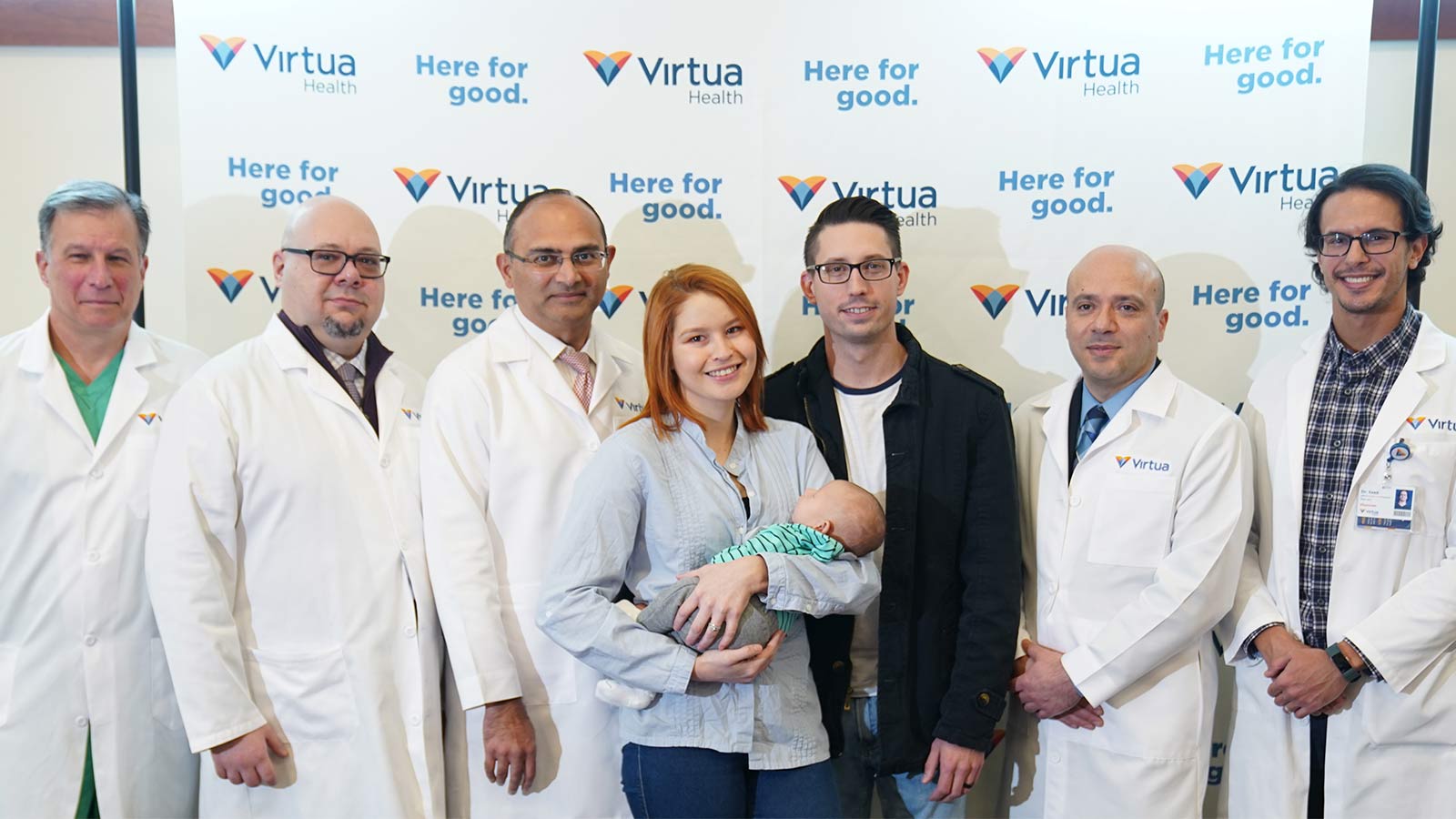Be Fast and Spot the Signs of Stroke
With a stroke, minutes matter. Learn all the possible signs so you or a loved one can receive immediate treatment and improve your chances of recovery.

By Carole Thomas, MD, Neurologist, Virtua Neurosciences
You may be familiar with some of the signs of a stroke: face drooping, weakness, or numbness on one side of the body, or slurred speech.
But some symptoms of a stroke can be less obvious—or may occur more frequently in women than men. Knowing all the possible signs so you or a loved one can receive immediate treatment may reduce the long-term effects of a stroke and improve your quality of life.
What Are the Types of Stroke?
A stroke occurs when blood flow to the brain is disrupted. Without steady blood flow, your brain cells begin to die, leading to possible paralysis, trouble speaking, and problems thinking clearly.
There are two main types of stroke:
- An ischemic stroke happens when a blood vessel supplying oxygen-rich blood to the brain is blocked.
- A hemorrhagic stroke occurs when a weakened blood vessel bursts and bleeds into the surrounding brain tissue.
You can’t tell the type of stroke you are having. Regardless, minutes matter. The sooner you get effective stroke treatment at the hospital—whether through a clot-busting medication called a tissue plasminogen activator (tPA) or surgery—the better your chances for recovery.
What Are the Signs of Stroke—and What Should I Do?
Use the acronym BE FAST to remember the symptoms:
Balance: Sudden trouble with balance or coordination
Eyes: Sudden blurred, double, or total loss of vision in one or both eyes
Face: One side of the face looks drooping or uneven. Ask the person to smile if you aren’t sure.
Arm: Is one arm (or leg) weaker than the other? If they raise both arms, does one drift down?
Speech: Is speech slurred or hard to understand? Are they unable to speak? Ask the person to repeat a short sentence.
Time to get help. Stroke is a medical emergency. Call 911 and get the person to a hospital immediately.
While the BE FAST acronym is a terrific tool for identifying stroke, there are other signs of a stroke to be mindful of as well, including sudden:
- Confusion
- Weakness or numbness in the face, arm or leg—especially on only one side of the body
- Dizziness
- Severe headache with no apparent cause—like the worst ice cream headache you’ve ever had
What Are Specific Stroke Symptoms in Women?
For women, it is important to know that you may experience different symptoms than men. Some are vague, and may be more easily dismissed or attributed to another medical condition.
These different stroke signs in women include:
- Loss of consciousness or fainting
- General exhaustion
- Difficulty or shortness of breath
- Sudden behavioral change
- Agitation
- Hallucination
- Nausea or vomiting
- Pain
- Seizures
- Hiccups
Call 911
If you think you or a loved one is having a stroke, call 911 and get to the nearest hospital for treatment.
Neurosciences Partnership with Penn Medicine
The Penn Medicine | Virtua Health Neurosciences Program brings the region’s foremost leader in neurological treatment and research to South Jersey. Together with the specialists at Virtua Our Lady of Lourdes Hospital, a New Jersey-designated Comprehensive Stroke Center, the Penn neurovascular team uses state-of-the-art techniques to minimize stroke damage.
A Penn neurosurgeon is on call around the clock.
Make an Appointment
Schedule an appointment with a Virtua neurosciences specialist or call 888-847-8823.
There's So Much More to Explore
Discover expert insights, inspiring stories, health tips, and more by exploring the content below!

What to Expect From a Robotic Hysterectomy

When You Need A Hysterectomy Know Your Options

Take Control of Incontinence, Prolapse, and Other Pelvic Floor Disorders

How Can I Prevent Bone Loss and Osteoporosis?

What Should You Do if You Slip, Fall, and Hit Your Head?

The Truth About Menopause, Weight Gain, and Belly Fat

Shedding Light on Lesser-Known Menopause Symptoms and Solutions

Debunking The Myths About Vaginal Dryness

What You Need To Know About Stroke Treatment

Best Foods for Kidney Health

What Causes Food Addiction And What Are The Signs

5 Essential Winter Foot Care Tips When You Have Diabetes

Advanced Minimally Invasive GYN Surgery Puts You at the Center of Care

Your 10-Point Plan to Avoid Winter Weight Gain

Colitis Symptoms Under Control, Jennifer Is ‘Living My Best Life’

Be Fast and Spot the Signs of Stroke

Surprising Symptoms May Signal Stroke In Women

8 Key Steps to Better Blood Pressure Control

5 Back Stretches for the Work-From-Home Workweek

The HPV Vaccine: A Powerful Shield Against Cervical Cancer

How Does Breast Density Affect Your Mammogram?

Menopause: New Insights Into the Power of Hormone Replacement Therapy

How to Prevent and Treat Urinary Tract Infections

One New Heart Valve Saves Two Lives in the Tritten Family

6 Numbers Key to Keeping Your Heart Healthy

4 Easy Ways to Treat and Prevent Runner's Knee

Breast Cancer Diagnosis Inspires Catherine to Help Others

Quick Action Leads to Jesse's Recovery From Stroke

Five Mindfulness Tips That Can Help Heal Your Heart
Working from Home? Take a Quick Break to Stretch Your Wrists

Watchman Heart Device: a Technological Breakthrough for Blood Clot Prevention

Love Your Heart: Essential Care Tips for Every Stage of Life

How Do I Measure My Blood Pressure at Home?

How Do I Improve My Cholesterol Levels?

3 Ways to Reduce Your Stroke Risk

How the Unique Stages of a Womans Heart Affect Her Health

Sarah Wins Back Her Health After Crohn's Disease Diagnosis

Put Your Mammogram Appointment on the Top of Your To-Do List

A Breast Self-Exam Saved Kristen's Life

How Sex Keeps You Healthy as You Age

Protect Your Child From HPV and Related Cancers

Why IUDs Might Be The Most Effective Birth Control

5 Things You're Too Embarrassed to Tell Your OBGYN

4 Not-So-Crazy Questions to Ask Your Doctor

